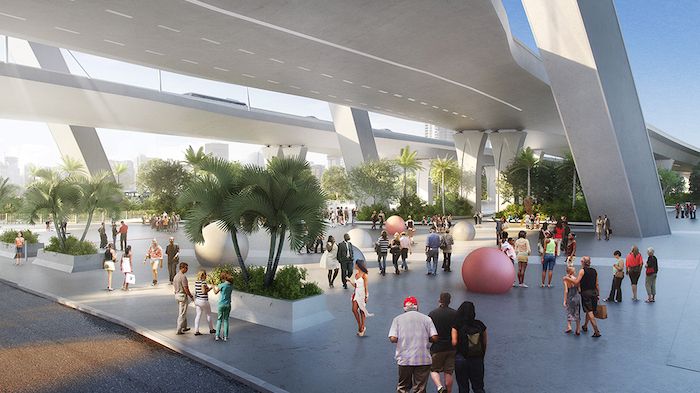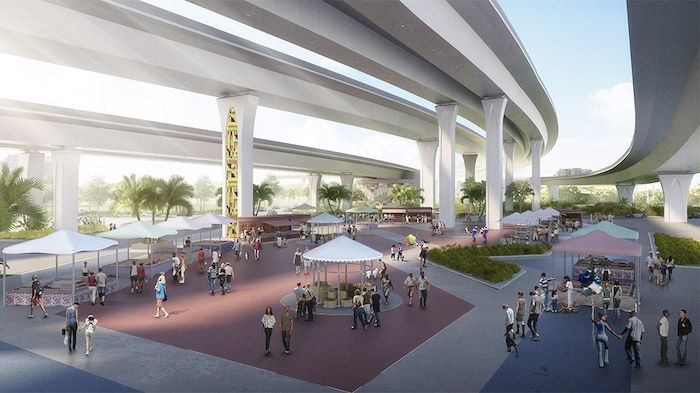In his latest blog, Robert Poole, director of transportation policy at the independent think-tank the Reason Foundation, sheds light on the views of the Public Interest Research Group (PRIG).
Ever since 2014, the anti-highways Public Interest Research Group (PIRG) has published periodic “highway boondoggle” reports. The fifth such report, “Highway Boondoggles 5,” was released last month. In 42 pages (with 186 endnotes) it reviews some of its previous targets and then critiques nine new projects:
- Complete 540, North Carolina
- North Houston Highway Improvements, Texas
- High Desert Freeway, California
- I-75 Improvements, Michigan
- Tri-State Tollway Widening, Illinois
- Connecting Miami, Florida
- I-83 Widening, Pennsylvania
- I-5 Rose Corridor Widening, Oregon
- I-81 Widening, Virginia
The complaints about these projects fall into five main categories. I’ll briefly discuss those, followed by a review of the Miami project, since that’s the one I know the most about.

PIRG’s first point is that highway mega-projects “saddle states with debt,” and the report includes a graph showing state DOT debt nearly doubling from 2008 to 2015. But for most people, buying a house also saddles them with debt. In fact, it makes good sense to finance major projects and have people pay for them over the many years during which they enjoy the benefits. And PIRG fails to point out that projects done as toll-financed public-private partnerships (P3s) do not saddle the state with any debt—the P3 company is solely responsible for debt service on the toll revenue bonds.
A bizarre claim is that a “new roadway is expensive to maintain.” Compared to what—an old, potholed roadway? That is just silly. If highway projects are procured (as they should be) based on minimizing their life-cycle-cost, rather than on the lowest construction cost, our infrastructure would be more durable and would need less maintenance than traditional lowest-bid projects.
One of PIRG’s major complaints is that adding highway capacity doesn’t “solve congestion.” As evidence, the report cites the past 40 years of capacity expansion while noting, correctly, that congestion is much higher today than it was in 1980. That’s true, but our population is 44 percent greater, our GDP is nearly three times as much, and annual vehicle miles of travel (VMT) has more than doubled. Highway/freeway lane-miles have nowhere kept pace with this growth. The report also cites the alleged “fundamental law of road congestion,” which claims that any added capacity is quickly filled up and hence is self-defeating. I critiqued the much-cited paper on which this claim is based in my book, “Rethinking America’s Highways,” and will be glad to send that excerpt to readers on request.

Another complaint is that suburban highway expansion fosters “sprawl.” Well, it does provide the transportation access that enables people who prefer suburban living to get to and from other parts of the metro area. And as extensive research has demonstrated, allowing residential and commercial expansion at the urban fringe is the best recipe available for keeping a metro area’s housing costs affordable. (Compare housing costs in car-restricting Los Angeles and San Francisco with housing costs in suburbia-friendly Atlanta, Dallas, Houston, Phoenix, etc.)
PIRG also plays a bit loose with the facts in citing “our car-dependent transportation system” as the country’s “leading source of global warming pollution.” Yet it’s the overall transportation sector (airlines, trucks, buses, seaports, ferries, Amtrak trains, etc.)—not just cars—that contributes the largest share of U.S. CO2 emissions, which PIRG supposedly means. And except on page 15, PIRG largely ignores the significant trend toward electric propulsion, not just for cars but also for medium and heavy trucks.
Also in the report are: (1) the silly claim that if a freeway is eliminated, the traffic it formerly carried will just “melt away,” (2) false claims that P3 projects which entered bankruptcy were bailed out by taxpayers, and (3) out-of-date claims about millennials being in love with transit (rather than becoming the largest share of new-car buyers in recent years).
Now let’s look at the Connecting Miami project, one of PIRG’s 2019 boondoggles. The project aims to fix a horrendous interchange in downtown Miami where three expressways converge: the SR 836 tollway, the I-395 link to the MacArthur Causeway (to Miami Beach and the Port of Miami), and north-south I-95. This interchange handles 450,000 vehicles per day, far more than it was designed for. And when it was built more than 50 years ago, it bisected several low-income communities.
The purpose of this $802 million project is to fix both problems, relieving serious congestion and re-connecting those communities. It does this via a number of lane additions, double-decking a stretch of 836, and creating a signature bridge with an expansive park underneath to reconnect the formerly separated communities. PIRG’s report denounces the park as a scam and claims people will be “strolling just feet from high-speed traffic under I-395” when that traffic on is a several-lane off-ramp to Biscayne Boulevard (whose traffic will be waiting at a stop light much of the time, not whizzing past).
I contacted James Wolfe, the Florida Department of Transportation’s district director for the Miami region, who hadn’t seen the PIRG report. He was not amused, and commented, “I find it inconsistent [of PIRG] to criticize the original construction of I-395 in Miami for dividing neighborhoods in the ‘60s, but to oppose the current project that is reconnecting those neighborhoods. The pedestrian, bicycle, and public space features of the I-395 underdeck have been universally applauded by both the neighborhoods it serves and the city of Miami that will maintain and operate it.”
Here is an artist’s rendering of a portion of the planned park area. More views are available here. You can get a better idea of the project’s scope and traffic flow improvements by watching this video here.
By the way, at the end of the report, PIRG provides a kind of scorecard on the current status of the 42 projects it defined as boondoggles in previous reports. Of that total, 18 have been completed or are under construction, 18 more are still under study or “being revised,” three are on hold, and only three have been cancelled.
Author: Robert Poole; Images: Florida DOT





